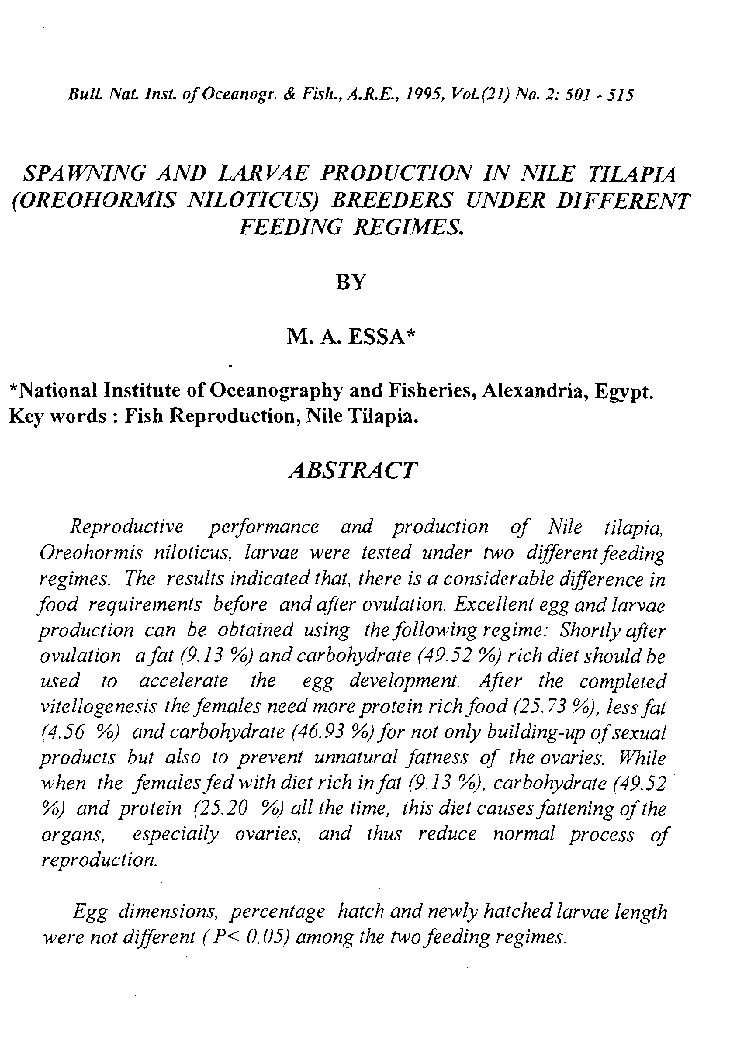Categories
vol-21SPAWNING AND LARVAE PRODUCTION IN NILE TILAPIA
(OREOHORMIS NILOTICUSj BREEDERS UNDER DIFFERENT
FEEDING REGIMES.
BY
M. A. ESSA*
*National Institute of Oceanography and Fisheries, Alexandria, Egypt.
Key words: Fish Reproduction, Nile Tilapia.
ABSTRACT
Reproductive performance and production of Nile tilapia,
Oreohormis niloticus, larvae were tested under two different feeding
regimes. The results indicated that, there is a considerable difference in
food requirements before and after ovulation. Excellent egg and larvae
production can be obtained using thefollowing regime: Shortly after
ovulation afat (9.13 %) and carbohydrate (49.52 %) rich diet should be
used to accelerate the egg development. After the completed
vitellogenesis the females need more protein rich food (25.73 %), less fat
(4.56 %) and carbohydrate (46.93 %)for not only building-up ofsexual
products but also to prevent unnatural fatness of the ovaries. While
when the femalesfedwith diet rich infat (9.13 %), carbohydrate (49.52
%) and protein (25.20 %) all the time, this diet causesfattening ofthe
organs, especially ovaries, and thus reduce normal process of
reproduction.
Egg dimensions, percentage hatch and newly hatched larvae length
were not different ( P< 0.05) among the two feeding regimes.







